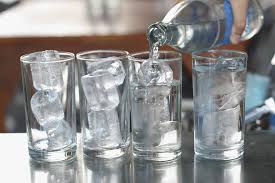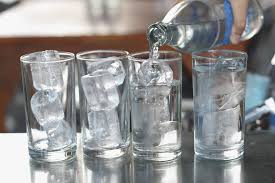
We’ve all experienced it: you drop an ice cube into a glass of water, and suddenly you hear a sharp crack, sometimes followed by several more. It’s a small event, often overlooked, but if you’ve ever paused to wonder what exactly causes that sudden shattering noise, you’re not alone. The cracking of ice cubes in water is a fascinating intersection of physics, chemistry, and thermodynamics. This seemingly simple occurrence is actually a result of complex interactions between temperature, pressure, and the unique molecular structure of water.
In this article, we’ll dive deep into the reasons why ice cubes crack when placed in water, the science behind it, and how you can even prevent it if you wish to keep your drinks quieter.
The Unique Properties of Water
Before we understand why ice cracks, it’s important to grasp what makes water—and ice—so unique.
Water is one of the few substances that expands when it freezes. As water molecules slow down and form solid bonds (ice), they arrange themselves in a crystalline lattice that is more spacious than their liquid form. This is why ice floats on water: it’s less dense. This expansion also means that frozen water (ice) is under tension. The molecules are forced into a specific rigid structure, even though they want to expand.
When an ice cube is suddenly introduced to a warmer environment (such as a glass of water at room temperature), the stage is set for stress and cracks.
Thermal Shock: The Core Reason
The primary reason ice cracks when dropped into water is a phenomenon known as thermal shock. Thermal shock occurs when a material experiences a sudden change in temperature. This rapid change creates stress between different parts of the material, especially if they heat or cool at different rates.
How Thermal Shock Works in Ice Cubes
- Temperature Gradient: When you drop an ice cube into warm water, the outer surface of the ice heats up faster than the inner core. The warm water immediately transfers heat to the surface of the ice.
- Expansion and Contraction: As the outer layer heats up, it begins to melt and expand. However, the inner core remains much colder and rigid. This temperature difference causes mechanical stress within the ice.
- Stress and Fracture: If the stress exceeds the tensile strength of the ice, it cracks to relieve the pressure. The cracking is often sudden and audible because the ice is essentially fracturing to release built-up tension.
This is thermal shock in action: the exterior wants to expand, the interior resists, and the result is a cracking sound as the rigid ice fractures.
Internal Stress in Ice Formation
Interestingly, some of the stress that causes cracking is already present before the ice cube even hits the water.
When water freezes in an ice tray, it typically freezes from the outside in. This means the outer shell becomes solid while the center is still liquid. As the inner liquid eventually freezes and expands, it pushes against the already solid outer shell. This creates internal stresses within the cube.
If there are impurities, air bubbles, or uneven cooling, the internal stress can be even greater. These imperfections act as weak points. So when the ice is introduced to a new environment (like warm water), these weak points are the first to give way, causing cracks.
Role of Impurities and Air Bubbles
Another factor that contributes to the cracking of ice is the presence of air bubbles and impurities trapped within the cube.
When water freezes, gases like oxygen and nitrogen that were dissolved in the water get trapped as bubbles. Similarly, impurities such as minerals can get concentrated in specific areas. These inclusions disrupt the uniform structure of the ice, making it weaker and more prone to cracking under thermal stress.
Also, trapped air bubbles expand quickly when exposed to heat. As the outer surface of the ice cube begins to melt and heat up, these air bubbles can expand rapidly, adding to the internal pressure and leading to cracks.
Why Does It Sound So Loud?
Cracking ice can produce surprisingly loud sounds—sometimes almost like a mini explosion. This is due to a combination of factors:
- Sudden Release of Energy: When the ice fractures, it releases built-up internal stress almost instantly. This sudden release generates a shockwave that we hear as a crack.
- Cavitation: Sometimes, cracking also causes the formation of small vapor bubbles (due to localized pressure drops), which then collapse. This process—known as cavitation—can also produce sharp sounds.
- Acoustic Amplification in Water: Water is an excellent medium for transmitting sound. The cracking sound is efficiently carried through the liquid, making it seem louder than it would in air alone.
Does Ice Crack More in Hot Water?
Yes, the hotter the water, the more likely it is that the ice will crack. The greater the temperature difference between the ice cube and the surrounding water, the more severe the thermal shock. This is why placing ice cubes in boiling or very hot water can result in dramatic cracking or even shattering.
Interestingly, this is also the principle behind a physics experiment known as the Mpemba effect, where under certain conditions, hot water can freeze faster than cold water. The interplay of temperature and structural stress in ice is complex and often surprising.
Can You Prevent Ice from Cracking?
If you’d prefer your ice cubes to stay silent and intact when dropped into a drink, here are a few tips:
- Use Filtered or Boiled Water: This reduces impurities and dissolved gases, resulting in clearer and stronger ice.
- Freeze Slowly: Slow freezing allows air bubbles to escape and reduces internal stress. Some people use insulated containers to freeze from one direction, creating clearer and more stable ice.
- Warm Ice Slightly Before Use: Let your ice cubes sit out for a minute before dropping them into water. Allowing them to come closer to room temperature reduces the thermal shock.
- Use Larger Ice Cubes or Ice Balls: Bigger pieces of ice have more thermal mass and can handle temperature changes better, though they still crack occasionally.
Other Fascinating Ice Phenomena
While we’re discussing the behavior of ice, it’s worth noting a few other curious properties:
- Pressure Melting: Ice melts under pressure. This is why ice skates work—the blade puts pressure on the ice, melting a thin layer and allowing for smooth gliding.
- Ice Spikes: Sometimes, when water freezes in a confined space, it forms a spike on top. This happens when the last bit of water is forced out through a small opening and freezes quickly.
- Black Ice vs. White Ice: Clear ice is denser and usually forms under slow freezing conditions, while white or cloudy ice contains air bubbles and impurities.
Conclusion
The next time you hear an ice cube crack in your drink, you’ll know that it’s not just a random noise—it’s a burst of physics in action. The interplay of rapid temperature change, internal stress, and molecular structure creates a perfect storm that causes ice to fracture audibly and visibly. From thermal shock to cavitation, this everyday phenomenon encapsulates some of the most fascinating principles of science.
Whether you’re a science enthusiast or just someone who enjoys a chilled beverage, understanding why ice cracks adds a layer of appreciation to a seemingly ordinary moment. And perhaps, armed with this knowledge, you might impress someone at your next dinner party—or simply enjoy the crackle of your cocktail with new insight.



